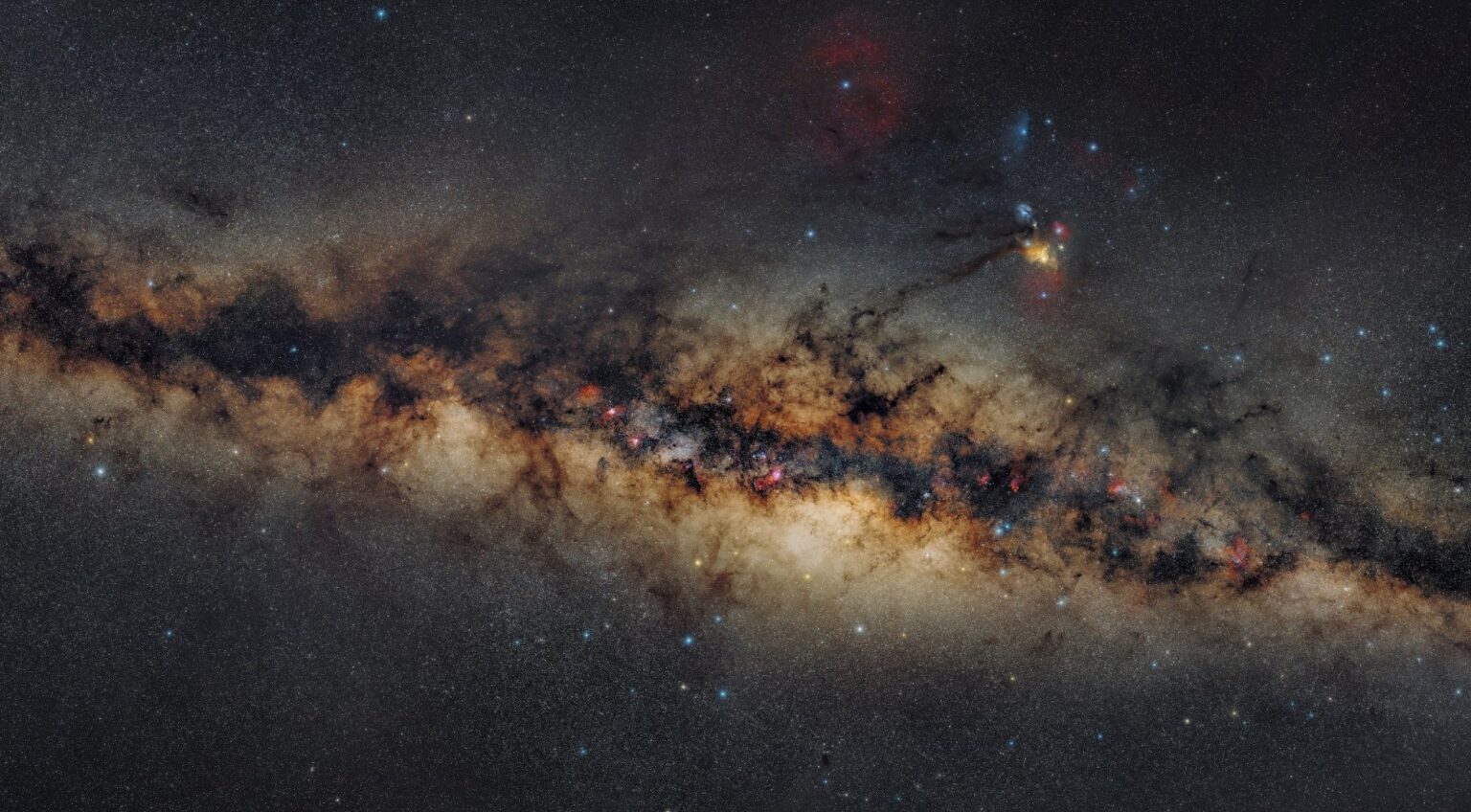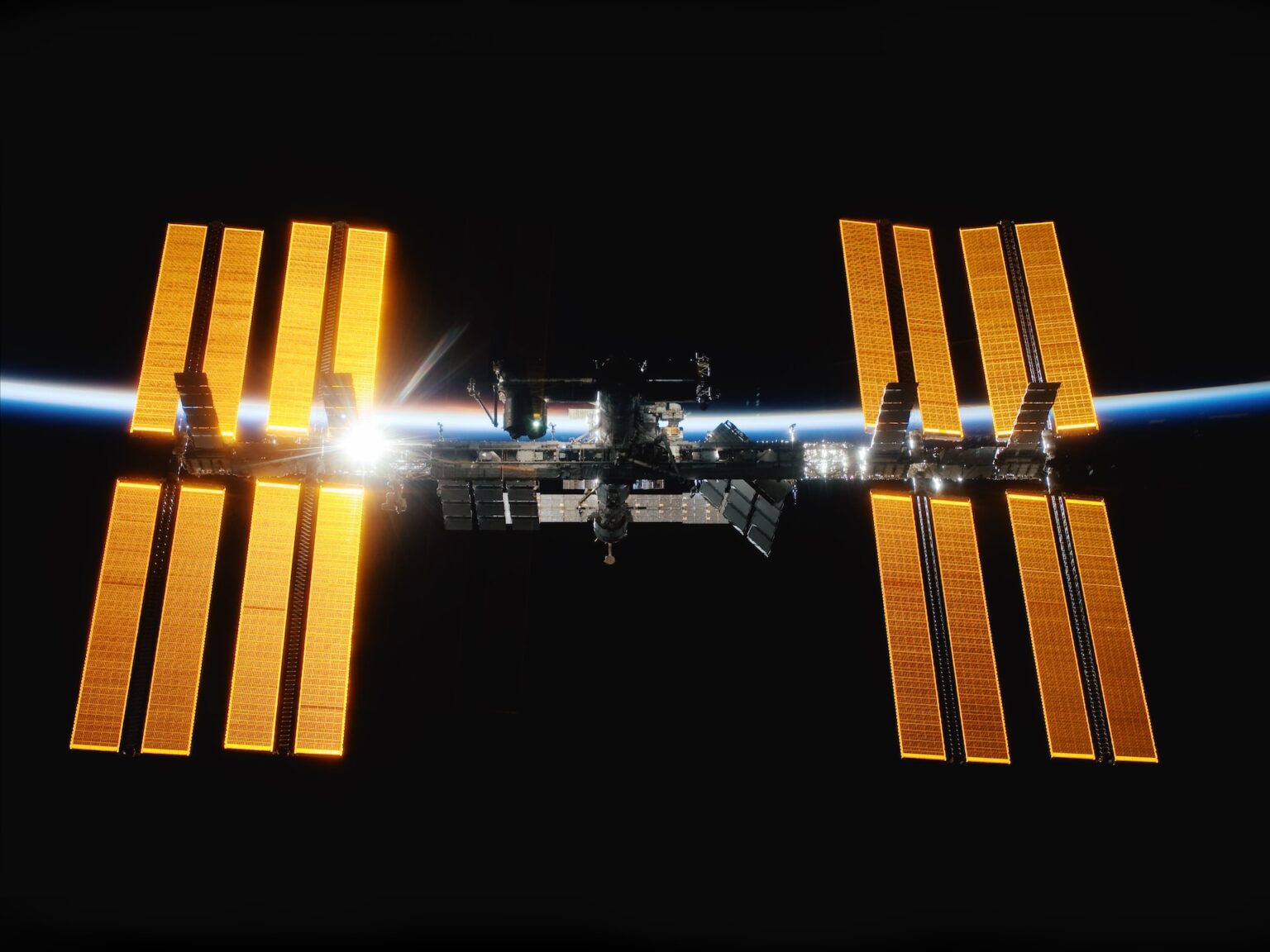Selection of the most interesting space news for the week: NASA has managed to completely restore communication with the Voyager 2 probe located in interstellar space; scientists have discovered the acceleration of the rotation of Mars, and we are talking about space bugs and famous accidents that happened because of them.

“The machines do not solve problems with greater insight than men do, only faster. Only faster!”
― Isaac Asimov
Powerful solar flares disrupted radio communications throughout the United States
Our Sun plays a key role in providing the Earth with energy. But it is also a source of significant disturbances in the atmosphere. This week there were two large-scale solar flares that caused a radio communication failure across the United States. On August 7, an explosion with a power of X1.5 caused a high level of radio suppression (R3) in an area that was illuminated by sunlight at that moment — most of the USA, Canada and the Pacific Ocean. Class X solar flares are the most intense. They cause degradation and failures of high-frequency radio signals, especially the one on the side of the Earth that is illuminated by the Sun. This flare-up was preceded by another one, which took place on August 5. It also belonged to Class X, but was more powerful — with an intensity of X1.6.
Also, on October 28, 2021, a solar event occurred, which was called a coronal mass ejection. Just now, scientists have published the results of a study of a powerful flare in the journal Geophysical Research Letters. A significant amount of plasma erupted from the solar corona and spread during the journey through the Solar System so much that it reached both Earth and Mars, despite the fact that they were on opposite sides of the Sun, at a distance of more than 150 million km from each other. This event was photographed by various spacecraft, including the SOHO solar mission, organized by NASA and ESA.
The Aeolus satellite fell to Earth at a speed of 27 thousand km/h: Where are the remnants
The Aeolus spacecraft made a planned and controlled fall to Earth. It was quite large, and therefore did not completely burn up in the atmosphere — part of it reached the surface. But where did the burnt remnants of the spacecraft fall? Engineers of the European Space Agency (ESA) managed to calculate the exact location of the satellite. ESA used data on the satellite’s last orbital position, as well as information from the US Space Command, to create a map of the trajectory of the spacecraft’s fall in the Earth’s atmosphere. It turned out that about 80% of it burned during entry into dense atmospheric layers, and the remaining 20% fell into the Atlantic Ocean.
Entering the atmosphere, the satellite turned into a bright fireball over Antarctica, moving at a speed of about 27 thousand km/h. The ESA team carried out a successful controlled descent and identified the place where the wreckage of the spacecraft fell into the waters of the Atlantic Ocean. The maneuver was planned in such a way as to minimize the risk of falling of the remaining fragments near populated areas, reducing it by 150 times.
The arrowhead of the Bronze Age turns out to be made of a meteorite
Archaeologists have discovered dozens of man-made tools made from meteorites. A significant part of such finds belong to the Middle East and Asia. In Europe, until recently, only two places in Poland were known where objects of meteoritic origin were found. A third location has recently appeared. An arrowhead found in a dwelling near Lake Mörigen in Switzerland at the end of the XIX century also turned out to be made of a meteorite.
When the Twannberg meteorite fell, it broke into fragments, of which, at the moment, it was possible to find more than 2,000 individual fragments with a total mass of more than 150 kg. All this happened a few kilometers from Lake Mörigen, where the arrowhead was found. However, the study shows that this particular arrowhead is definitely not related to the Twannberg meteorite. Scientists suggest that it was made from parts of another meteorite that fell on the territory of Estonia around 1500 BC.
NASA completely restored communication with Voyager 2
Communication with Voyager 2 was lost on July 21, 2023. This was due to a set of commands passed to it, one of which turned out to be erroneous. After completing it, the spacecraft changed its orientation and its antenna deviated from the communication line with the Earth by two degrees. This turned out to be enough for Voyager 2 to lose the ability to transmit the collected information.
Initially, it was believed that contact with Voyager 2 would be restored no earlier than mid-October, when it was supposed to perform a programmed maneuver to reset its orientation. After that, the engineers decided to send Voyager 2 a command to reorient the antenna. Since the radio signal emitted from Earth takes 18.5 hours to reach the spacecraft, they had to wait 37 hours to find out if the plan worked. In the end, everything was resolved safely. On August 4, Voyager 2 broke its radio silence and resumed transmitting telemetry. It is reported that all systems of the spacecraft are operating normally.
NASA mission finds acceleration of Mars rotation
Using data from the InSight mission, scientists have made the most accurate measurements of the rotation of Mars in history. It turns out that the speed of rotation of the Red Planet around its axis increases slightly. Measurements of the rotation speed of Mars were performed during the RISE experiment (Rotation and Interior Structure Experiment). In its course, scientists transmitted a radio signal to the InSight spacecraft located on the surface of the planet, which then reflected it back. Having received the reflected signal, the scientists looked for tiny frequency changes caused by the Doppler shift, which made it possible to determine the speed of rotation of the planet. It was not an easy task, because it was about finding deviations of less than 40 cm, which required enormous work on noise filtering.
InSight data analysis has revealed the so-called rocking of Mars, which occurs due to the fact that the planet’s core is partially liquid. This made it possible for scientists to estimate its radius. The figure they received was 1,835 km. The researchers then compared this figure with two previous estimates of the core radius based on InSight seismometer data. In particular, they pay attention to how seismic waves propagate in the interior of the planet — whether they are reflected from the core or pass through it unhindered. Taking into account all three measurements, they obtained an estimate of the radius of the core in 1790 – 1850 km. For comparison, the radius of the entire Mars is 3390 km. InSight data also allowed another discovery to be made. It turns out that Mars rotates with a slight acceleration of about 4 angular milliseconds per year.
Photo of the week

Astrophotography enthusiast Andrew McCarthy has long dreamed of capturing the full beauty of the Milky Way galaxy in his photographs. However, the circumstances of his life in Arizona did not allow him to realize this plan. Light pollution and the latitude of the state prevented him from achieving the desired result. In order to overcome these limitations, the brave photographer undertook several international trips to get to a small island in the Maldives archipelago in the Indian Ocean. Thanks to the location of the island near the equator, McCarthy was finally able to get the long-awaited impressive picture — a complete and detailed look at the Milky Way galaxy.
Interesting figure — USD 3 billion per year

The International Space Station (ISS) orbits the Earth at an altitude of about 400 km. Its path covers approximately 90% of the planet’s surface. Because of the huge solar panels reflecting sunlight, it can be seen with the naked eye in the morning or evening when it flies over your area. According to the NASA headquarters, the maintenance of the ISS costs about USD 3 billion annually. The ISS is a multinational project that does not belong to any single country. In fact, 15 countries have contributed to its creation. The station was visited by more than 250 representatives from 20 different countries. Most of all, 158 people are from the United States; Russia is in second place (54 people).
Something to read on the weekend

Space imposes the highest demands on the reliability of any technology. The smallest inaccuracy in calculations, a structural defect, or a malfunction of even a minor component can lead to catastrophes and multimillion-dollar losses. However, accidents in space do not only occur due to “hardware” problems. Another quite common cause of failures is errors in software. Mykyta Lytvynov tells us about space bugs and seven famous accidents that happened due to computer errors.
Everyone loves cats. Fluffy pets live almost everywhere. Probably, the only place where you can’t meet them is the starry sky. Among the 88 modern constellations, there is none named Cat or Kitten. However, that doesn’t mean astronomers haven’t tried to place them in the sky. Olexandr Burlaka offers to find a cat in the sky.
Follow us on Twitter to get the most interesting space news in time
https://twitter.com/ust_magazine
